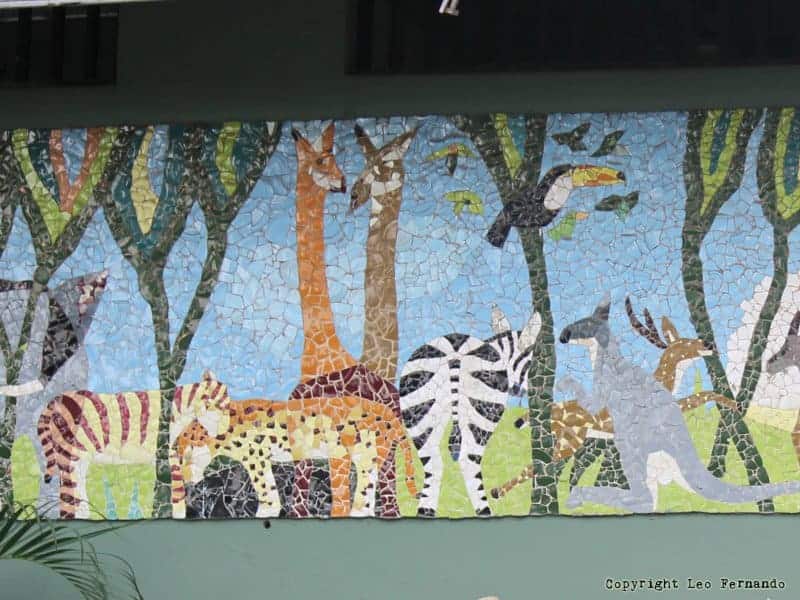The Dehiwala Zoological Gardens has quite an impressive history that dates back to 1936, in an attempt to create an exceptional place for a wide variety of animals, albeit in places this particular zoo has, quite sadly, missed the mark. For one the Aquarian are now highly extensive and well-kept in most places, holding arapaima and red-tailed catfish from the Amazon, among the largest freshwater fish in the world, at times over six feet long. There is quite an impressive amount of marine life in the aquarium as well, with corals, starfish and reef fish to boot. An albino cobra, while incredibly beautiful, sleeps in a rather dark corner of its terrarium, coiled up in the straw in relative sorrow.
Suffice it to say that the air is much fresher and the zoo has been expanded to include a miniature jungle for just butterflies, a lovely place that is actually worth seeing if you think of visiting Dehiwala Zoological Gardens. While there is intense color thanks to the variety of tropical birds in the trees, much of it is rather depressing for the committed animal lover.
For one, the macaws close to three feet from head to tail at maximum have a big cage with a tree trunk on which to perch although it is not enough by far. Plus wild macaws often eat clay to aid in digestion and to neutralize the toxins in the fruits and leaves they eat, which should probably be considered in the future at least.
In fact, for a number of the larger mammals, which are highly energetic and require a great deal of space instead of little cages in which to pace up and down, conditions have not really changed for the better at Dehiwala Zoological Gardens. More intelligent animals often require more stimulating enclosures. The lion happily has plenty of ground in which to run around and looks much happier these days while his poor jaguar relatives are still stuck in tiny, rusted cages.
The fates of the animals are quite mixed. While the resident anacondas have been birthing in recent years-rare for these giant snakes-there has also been a case of direct cannibalism, when the female, a serpent of fifteen feet long consumed her mate whole. It is quite natural, to be fair as anacondas even go so far as to eat their own offspring. One wouldn’t really worry too much about the cold-blooded giants in the Dehiwala Zoological Gardens, especially not those of the water-loving kind.
The reptile area is suitably large for the huge scaly beasts at the zoo, including saltwater crocs and gharials, as well as the terrapins that leisurely relax on the heads of the crocodilians but there are other tragedies that occur on a regular basis. Despite the birth of a black rhinoceros, it is quite obviously not at home in its enclosure. Rhinos, after all, wallow in mud to keep cool.
Resting under a tree does them no service whatsoever.
In terms of the bears, they have never really been too upset with their lot, still having the rocky, log-filled enclosures that they used to have. The primates especially feel good nowadays too in their treetop abodes and are just as numerous these days as the birds. However, there are still clear signs of decay and death in the zoo. Whereas other zoos the world over-even Thailand has its own miniature replica of a safari park-have proper housing for its animal inhabitants, one wonders what the point of the Dehiwala Zoological Gardens really is. Perhaps the pride and joy of the zoo are the elephants, which are made to perform and do tricks for visitors. It is hardly proper treatment for intelligent creatures which clearly feel grief and loneliness. There are plenty of elephants chained up at the feet too, milling about in enclosures too small for them to even turn in. In other words, one should reconsider the purpose of the zoo, and turn it into a butterfly park and insectarium rather than an area for big, intelligent mammalian life.
Written by Vasika Udurawane for Travel Lanka Compass



0 Comment